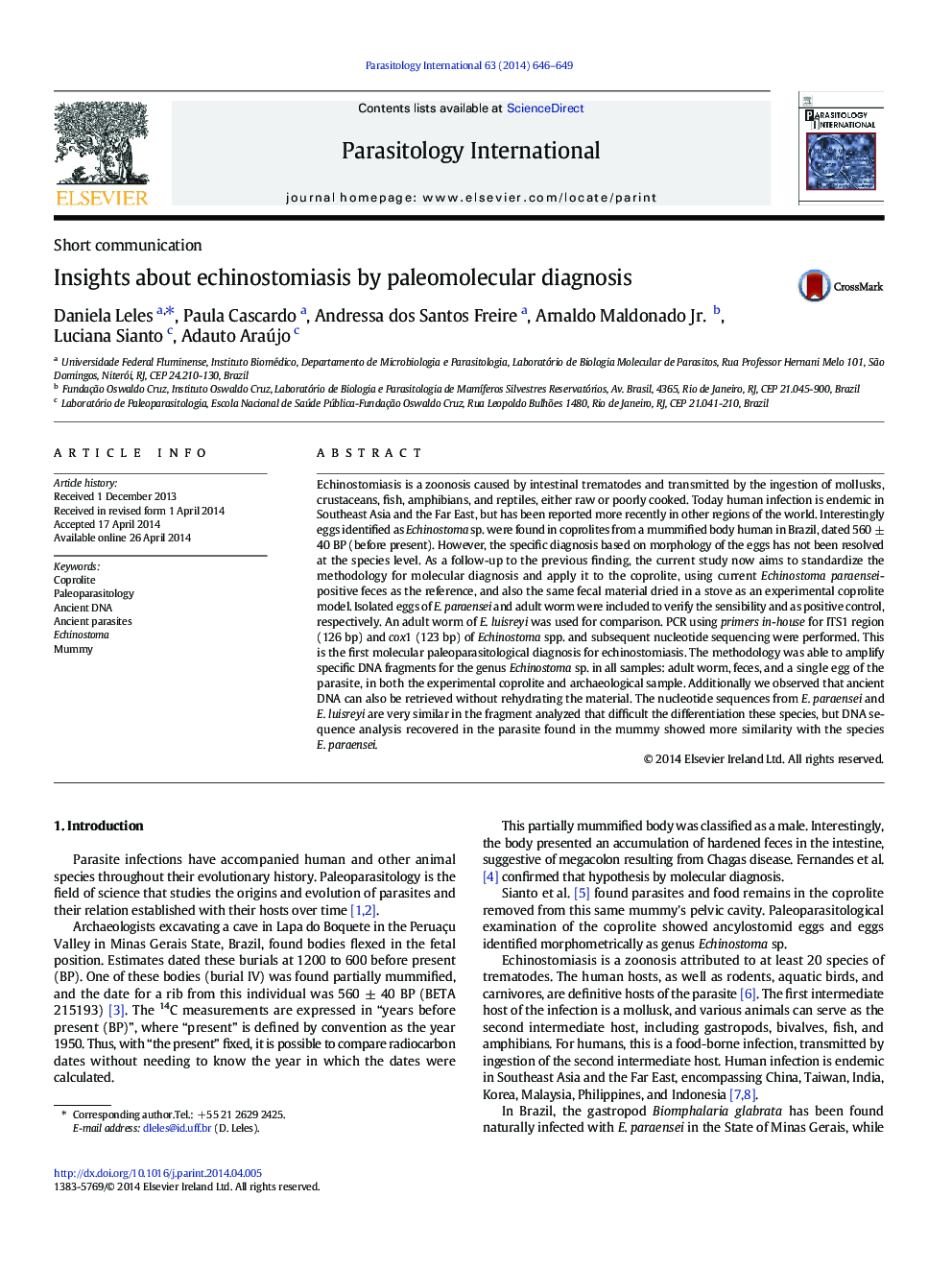| کد مقاله | کد نشریه | سال انتشار | مقاله انگلیسی | نسخه تمام متن |
|---|---|---|---|---|
| 6136771 | 1225473 | 2014 | 4 صفحه PDF | دانلود رایگان |
- This is first paleoparasitological molecular diagnosis for echinostomiasis.
Echinostomiasis is a zoonosis caused by intestinal trematodes and transmitted by the ingestion of mollusks, crustaceans, fish, amphibians, and reptiles, either raw or poorly cooked. Today human infection is endemic in Southeast Asia and the Far East, but has been reported more recently in other regions of the world. Interestingly eggs identified as Echinostoma sp. were found in coprolites from a mummified body human in Brazil, dated 560 ± 40 BP (before present). However, the specific diagnosis based on morphology of the eggs has not been resolved at the species level. As a follow-up to the previous finding, the current study now aims to standardize the methodology for molecular diagnosis and apply it to the coprolite, using current Echinostoma paraensei-positive feces as the reference, and also the same fecal material dried in a stove as an experimental coprolite model. Isolated eggs of E. paraensei and adult worm were included to verify the sensibility and as positive control, respectively. An adult worm of E. luisreyi was used for comparison. PCR using primers in-house for ITS1 region (126 bp) and cox1 (123 bp) of Echinostoma spp. and subsequent nucleotide sequencing were performed. This is the first molecular paleoparasitological diagnosis for echinostomiasis. The methodology was able to amplify specific DNA fragments for the genus Echinostoma sp. in all samples: adult worm, feces, and a single egg of the parasite, in both the experimental coprolite and archaeological sample. Additionally we observed that ancient DNA can also be retrieved without rehydrating the material. The nucleotide sequences from E. paraensei and E. luisreyi are very similar in the fragment analyzed that difficult the differentiation these species, but DNA sequence analysis recovered in the parasite found in the mummy showed more similarity with the species E. paraensei.
74
Journal: Parasitology International - Volume 63, Issue 4, August 2014, Pages 646-649
